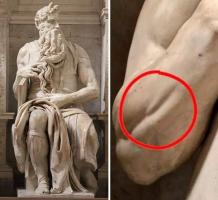Technical Note: TN002
Technical Note: TN002
Subject: TOS ROM UPGRADE
This document should accompany a set of 6 ROMS. These ROMS are identified as follows:
PART NUMBER LOCATION
C026160-001 U2
C026244-001 U3
C026245-001 U4
C026163-001 U5
C026246-001 U6
C026247-001 U7 These ROMS should be handled with caution.
Before starting an upgrade, ensure that the 520ST is fully operational, then remove all power, video and disc cables.
UPGRADING COLOUR SYSTEMS
Some colour monitors will not have enough adjustment on their vertical and horizontal adjustments to centre the screen. The GLUE IC C025915-38 will now compensate for this. If you do not have this version then you will also need to upgrade your GLUE IC.
There are three versions of the GLUE chip:
Version
- 1: C025915
- 2: C025915-20
- 3: C025915-38
If you intend to use a THOMSON/ATARI colour monitor then this latest GLUE IC will be required. This IC can be ordered from Atari through your normal spares order. Please quote part number C025915-38. (Cost as an upgrade part: 18.00 exc VAT).
Product being produced now will have the latest GLUE IC, so check your GLUE version before upgrading.
Refer to figure 1 to establish the location of the GLUE IC.Now follow the ROM UPGRADE instructions.
THIS GLUE IC UPGRADE IS NOT REQUIRED FOR MONOCHROME SYSTEMS.
ROM UPGRADE
Dismantle the ST carefully by removing the six screws from the base. Once plastic and shield have been removed, locate the ROM socket area of the board (see figure A). There are three versions of the 520ST that have been produced to date, the ROM installation will vary according to which version of the board you have so identify your board from the following:-
BOOT EPROM - PCB Revision 2
These are very early computers which were produced before masked roms were available. You have this version if a jumper wire is visable running from below the socket marked U7 to the middle front of the socket marked U3 and/or the two chips in the sockets have labels with handwritten markings on them. To upgrade these versions requires soldering and desoldering. The first thing you will need to do is remove the PC board from its bottom plastic cover. Refer to figure 2. Now turn the board upside down and look at the area underneath ROM sockets marked U4, U5, U6, U7. Looking at pins 27 and 28 on these sockets you should be able to see a solder bridge shorting the two pins together; this short needs to be desoldered on all four sockets. Next turn the board rightside up again and look between U3 & U4, U4 & U5, and U6 & U7; towards the right hand side between each of these sockets should be a cut trace. This trace normally connected all the pin 27's together, so you will need to jumper it back the way it was before it was cut. Easiest way would be with three jumpers; first, jumper pin 27 of U3 to pin 27 of U4; second jumper pin 27 of U4 to pin 27 of 5; and third, jumper pin 27 of U6 to pin 27 of U7. Before checking for continuity betwen pin 27 of the sockets and A15 which can be found on pin 43 of the 68000 CPU chip (U10). Also make sure that all pin 27 are disconnected from all pin 28's.
Please note that it is very important that each rom be put in its appropriate socket and that they be plugged in with pin 1 in position that is consistent with other I.C.'s on the board. (See fid 1).
MASKED BOOT ROM Versions - PCB Revision 2, B & C
Revision 2 comes in two forms. one of which has no links or track cuts in the ROM area. The other has a link on the rear of the board between pin 27 of the socket at U3 connecting to pin 27 of U7 and pin 3 of RP2. revisions B & C can be identified from their screen printing.
To upgrade, simply remove the existing chips by wedging a small flatblade screwdriver between the chips and their sockets and carefully lever the chips out.
Once the old chips have been removed, carefully insert the six new roms as shown in fig 1.
Please note that is is very important that each rom be put in its appropriate socket and that they be plugged in with pin 1 in a position that is consistent with other I.C's on the board. (See fig 1).
MASKED ROM Version - PCB Revision 2B
This can be identified by the link options 'Masked Rom' and 'E- Prom' located close to sockets U4 and U7. You will need to install a wire shorting link joining the pads nearest 'Masked Rom' at positions U4 and U7 (see Fig 3).
Having done this replace the old Roms taking care to en sure that pin 1 of each is in a position consistent with that of other I.C.'s on the board. (See fig 1).
MONOCHROME SYSTEMS WITH PCB REVISIONS 2 AND 2B
If ST boards at revisions 2 and 2B are to take TOS Roms in sockets U2 to U7, the following modifications are suggested to remove shimmer from Monochrome Monitors.
- Add de-coupling capacitors C1, C2, C4 and C5 (fig 4).
- Add a smoothing capacitor for the +5V supply (fig 5).
FAULT FINDING
If after switching on your ST the DESKTOP does not appear, check your work, ensuring that all the ROMS are seated correctly.
On a SC1224 colour monitor the vertical and horizontal holds may need to be adjusted.
Remember that your desk top accessories will still need to be loaded from disk.
For copies of the diagrams referred to in this technical note, please contact the supplier of your Atari ST.
-- END --

















